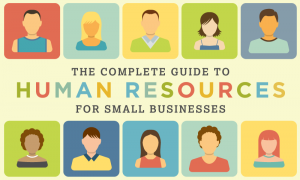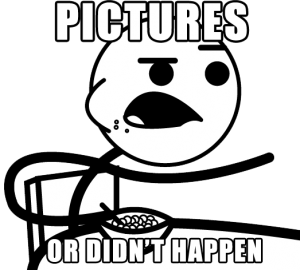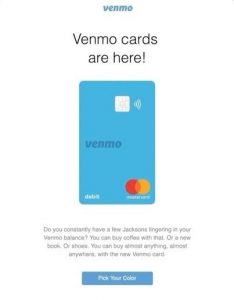
Lately, YouTube content creators have faced a bunch of issues: YouTube copyright strikes.
Basically, YouTube is taking down one or more of their videos (or even entire channels) due to reports of copyright infringement or violation of YouTube’s community guidelines.
Many YouTubers have uploaded videos in which they rant about how badly YouTube’s “law enforcement” efforts are made. Like GradeAunderA’s hilarious rant:
What’s sad is that the videos and channels struck down were not ALWAYS proven wrong, and the guilty and naughty ones (violating copyrights, containing violent or graphic content, etc.) are left untouched by the mighty YouTube.
Some of the channels and videos shut down by YouTube were successfully brought back, mostly due to channel owners’ complaints and fan support.
But still, they lost their ad revenue for a period of time, which for many channels could mean hundreds or thousands of dollars.
In this post, I’m going to talk about what you CAN and CAN’T put in your videos to avoid strikes on copyright infringement or other law violation, not only for YouTube but also for Internet publishing in general.
What is Allowed to Put in Your Video:
There are certain content you are allowed to use in your video without having to contact the copyright holder. Here are some of them:
1. Royalty-Free Music
You’re maybe wondering what the heck “Royalty-Free Music” is. One thing you need to know for sure is that “royalty-free music” is NOT free.
Royalty-Free Music means that you only have to pay once for the music, but you can use it once or 1,000 times without having to pay another cent.
You can easily find royalty-free music across multiple online music libraries. We recommend PremiumBeat, AudioJungle, and IBAudio. Freesound is also an awesome place if you need royalty-free sound effects.
Here’s an example of music you can get from AudioJungle.
http://www.youtube.com/watch?v=p_Gfx4z-0_k
Of course, you CAN use music and sounds that aren’t royalty free, but it’s more costly since you have to pay whenever you want to use the music.
2. Picture of Public Spaces and Private Properties
According to Photojojo, you are allowed to do any filming or photography in public places (includes: sidewalks, streets, parks, malls) to the extent to that you can take pictures of private properties (such as houses, buildings) as long as you are not trespassing.
If someone’s house is visible from the sidewalk where you shoot the video, it’s fair game; nobody can sue you for doing that.
If you’re looking for a solid example regarding this matter, this music video of Vanessa Carlton making her way downtown is excellent.
And no, she has never been sued for showing those private buildings in her video.
Speaking of trespassing, you should not expect a “No Trespassing” sign to be present all the time. And simply extending your camera lens over a fence could mean trespassing.
However, this does not happen often if you’re creating animated videos, like us, since we are obviously using materials that we rightfully create and own.
But you have to be more careful with your intellectual property like images, brand logo and style, which I’ll talk about in the next point.
3. Your Own Intellectual Property
If you’re dealing with a lot of animation videos like BreadnBeyond, I’m guessing you have your own team of creative illustrators.
This is one among many of our animated video, which was born purely out of our creativity and ideas.
But if you don’t have a team of illustrators, or you can’t do the drawing part yourself, NEVER ever use other people’s artwork without their permission.
Intellectual property is protected by the law, so if you want to use other people’s intellectual property, a letter of permit is mandatory or else they can sue you for that.
Copyrighted images aren’t always watermarked with © (“circle C”).
The truth is, one doesn’t have to file any special paperwork to be granted copyrights to their intellectual property, namely images.
Social Media Examiner wrote an awesome article about image copyright and how you can use it for your own projects.
Your own images are the safest bet for you to use in your videos.
Not only are you free of worries about someone claiming his or her right to particular frames in your video, you will have copyright of what you just created.
What’s Not Allowed to Put in Your Video Without Permission
There are things you can simply merge in with your video, but there are limitations to what you are legally allowed to do. These are off-limits from what you can merge in with your video without the owner’s permission:
4. Copyrighted Music and Sound Effects
Music and sound effects that are subject to copyright are commonly under legal protection from plagiarism and copyright infringement.
It is not restricted, per se, for you to use in your video, but if the music and/or sound effect is subject to copyright, you need to track down the copyright holder and settle what’s to be done if you want to use his or her intellectual property to avoid future unexpected lawsuits.
If you want more choices of music, you can go to community-run audio sharing website like SoundCloud.
Many artists in SoundCloud provide their contact information in their music description. It’s easier to set an agreement if you know who to reach in the first place right?

If you are very lucky, at best, nothing will happen even if you use someone else’s music or even earn money out of it. But you should expect at least first-degree burn if you play around with fire
According to Reelseo, these are the consequences of using other creator’s copyrighted audio:
a. On YouTube, your account may receive a strike.
b. Your audio may be muted.
c. Ads may be placed on your videos, with the benefits going to the original artist/publisher.
d. You could be sued by the owner of the work you are using.
5. Copyrighted Clips and Stills from Other Creators
The source of clips and images aren’t always clear on the Internet. But as our fellow at VideoUniversity put it: just because you can’t find the owner, doesn’t mean you can get away with it.
It’s best to assume that every image, artwork, clip and video you can find on the internet is subject to copyright. A case as simple as using a photograph as the basic material for a digital artwork could lead to a lawsuit.

A famous street artist, Shephard Fairey, created the “Hope” poster during Obama’s first presidential run in 2008.
The poster rapidly spread and became the symbol of Obama’s campaign. Mannie Garcia, whose photograph was allegedly used by Fairey as the raw design, demanded compensation under the name of his agency.
Although they came to a private settlement, these hassles could have been avoided had the permission been in Fairey’s possession by the time his poster went viral.
6. Community Guidelines Restrictions
Community guidelines are not always related to copyright or trademark infringement.
However, video publishing websites have their own community guidelines that act as the border between what you can and cannot publish in those websites.
Generally, they prohibit the use of nudity, violent, hateful, and spammy content.
As stated in YouTube’s community guidelines, a first-time community guidelines violation is treated as a warning and the ban is temporary. This is the same for the second violation, until the third violation when your account is gone for good.

YouTube copyright strikes are automated and therefore, mistakes are inevitable. In many cases, even when you’re not violating any community guidelines of copyright laws, a warning or takedown may happen.
But with enough evidence of your innocence, you could get back what you lost from the strike. We too have got some warnings regarding copyright matters, but we’re more than 100% clear that we’re on the good side.
Meanwhile, according to Vimeo community guidelines, users are only allowed to upload their own creations. As for promotional content, users are required to use Vimeo Pro, a paid service from Vimeo for marketing campaigns.

Conclusion
Skimmed through the article? Here, have something to take away:
1. Always try to track down beforehand who owns the content you want to use.
2. If you can find it, make an agreement. Otherwise, avoid using that intellectual property.
3. Follow the community guidelines for the website you’re publishing.
Copyright laws seem unclear, but we’re obligated to obey them anyway. I hope what I’ve written can help you understand what content is allowed in your video.
If you have stories to tell or questions to ask regarding copyright in videos, let me know in the comments!
Digital & Social Articles on Business 2 Community(194)







